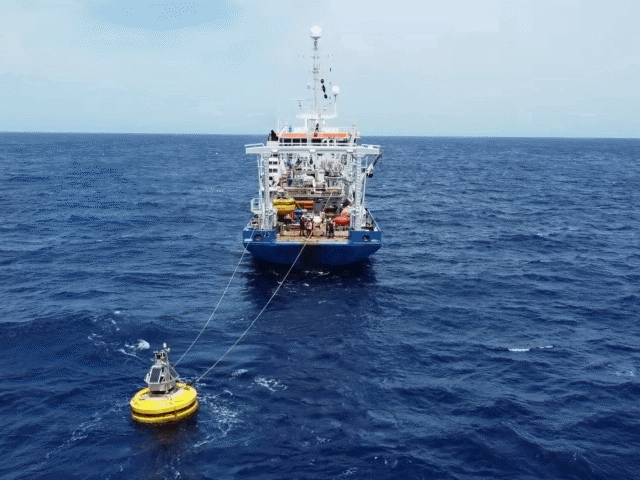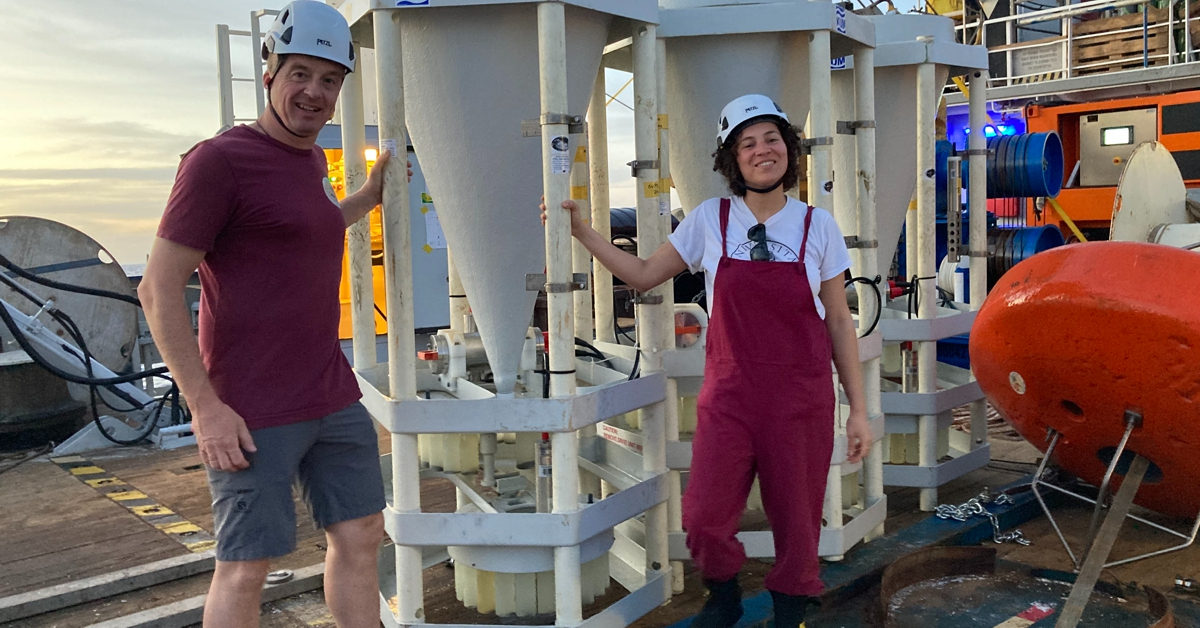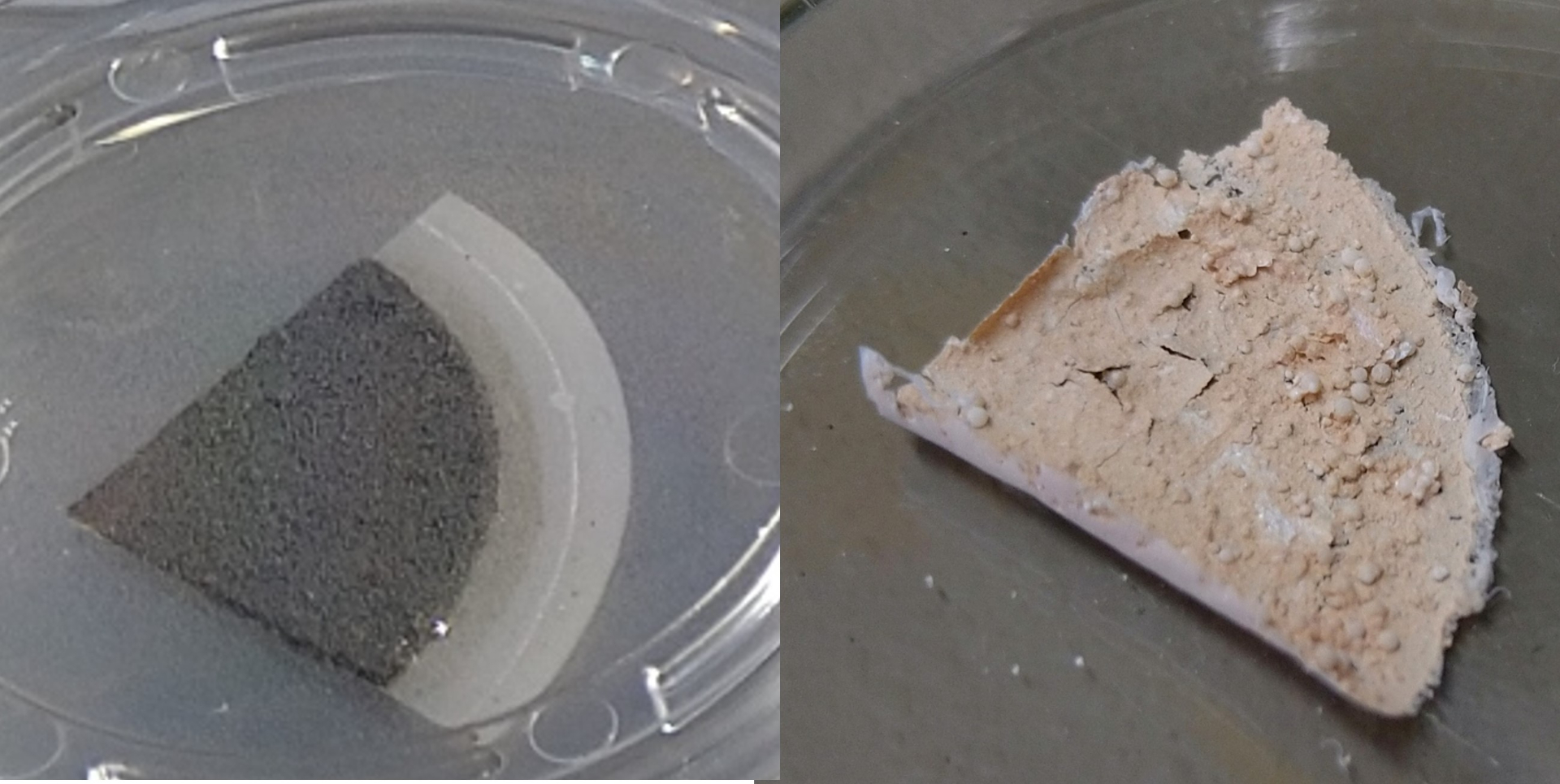
Since 2012, a trans-Atlantic array of instruments moored at five stations between the African west coast and the Caribbean has been monitoring Saharan dust and its marine-environmental effects. The easternmost of these stations is M1 at about 12°N/23°W and which consists of dust-collecting buoy Laura that samples the air and three moored sediment traps that intercept sediments (not only Saharan dust but also the remnants of plankton that lives in the ocean and largely depends on the supply of dust as their only source of nutrients) settling from the atmosphere, surface ocean to the deep.
Since 2016 this is done at a crazy high temporal resolution of four days per bottle, in order to study individual dust outbreaks and their varying marine environmental effects.

In this photo, taken onboard NIOZ' flagship RV Pelagia during expedition 64PE514, you can see three so-called KUM-type sediment trap that consists of a large funnel ending in a bottle on a carousel. Each trap has two carousels, allowing for N=39 bottles per trap. A little bit of sediment can be discerned on the bottom of each bottle, and this material is a mixture of dust particles, organic matter and fossil remains of all kinds of plankton that used to live in the surface ocean. Obviously, this material is very precious and contains a wealth of information, not only on atmospheric processes that dispersed and deposited the dust particles, but also the oceanographic conditions in which the scores of plankton types used to thrive.
Back home in the lab, the samples are washed and split, so that the material can shared amongst peers with different scientific backgrounds and interests.

Here you see how the material on the 47mm diameter polycarbonate filter changes colour from green to orange after treatment in a so-called Low-Temperature Asher, in which organic tissue is combusted at temperatures of about 90°C. The material on the right has the typical Saharan-dust orange tones but also contains white particles that are the calcium-carbonate remains of so-called foraminifera: uni-cellular organisms that live in the upper 200m of the ocean.
To further isolate the Saharan dust, the calcium-carbonate particles are dissolved using a mild solution of hydrochloric acid. Following this procedure, not only the organic-carbon content can be established but also the physical (particle size) and chemical characteristics of the dust particles can be analysed.
The resulting data consist of one year of carbon export and Saharan-dust outbreaks as registered by the sediment traps, of which some data could also be compared to the dust that was collected by buoy Laura. These data are unique in the world and for the first time provide insight into the dynamics of dust emission, transport and deposition as well as their marine-environmental effects.
The paper is fully open access and can be read here.
In a follow-up study, Blanda also studied the radiogenic isotopes of this one-year dataset, in order to establish the provenance of the material. The manuscript that resulted from this study will be submitted for publication soon.
Blanda Matzenbacher pursues her scientific career as a PhD student at the University of Stockholm in Sweden.
The paper was published in a special issue of the journal Frontiers in Marine Sciences, called the Research Topic: Aerosol Deposition in the Ocean: Drivers and Biogeochemical Effects, which you can read here.
Guest editors of this Research Topic are: Catarina Guerreiro, Cécile Guieu, Tim Jickells and Jan-Berend Stuut.